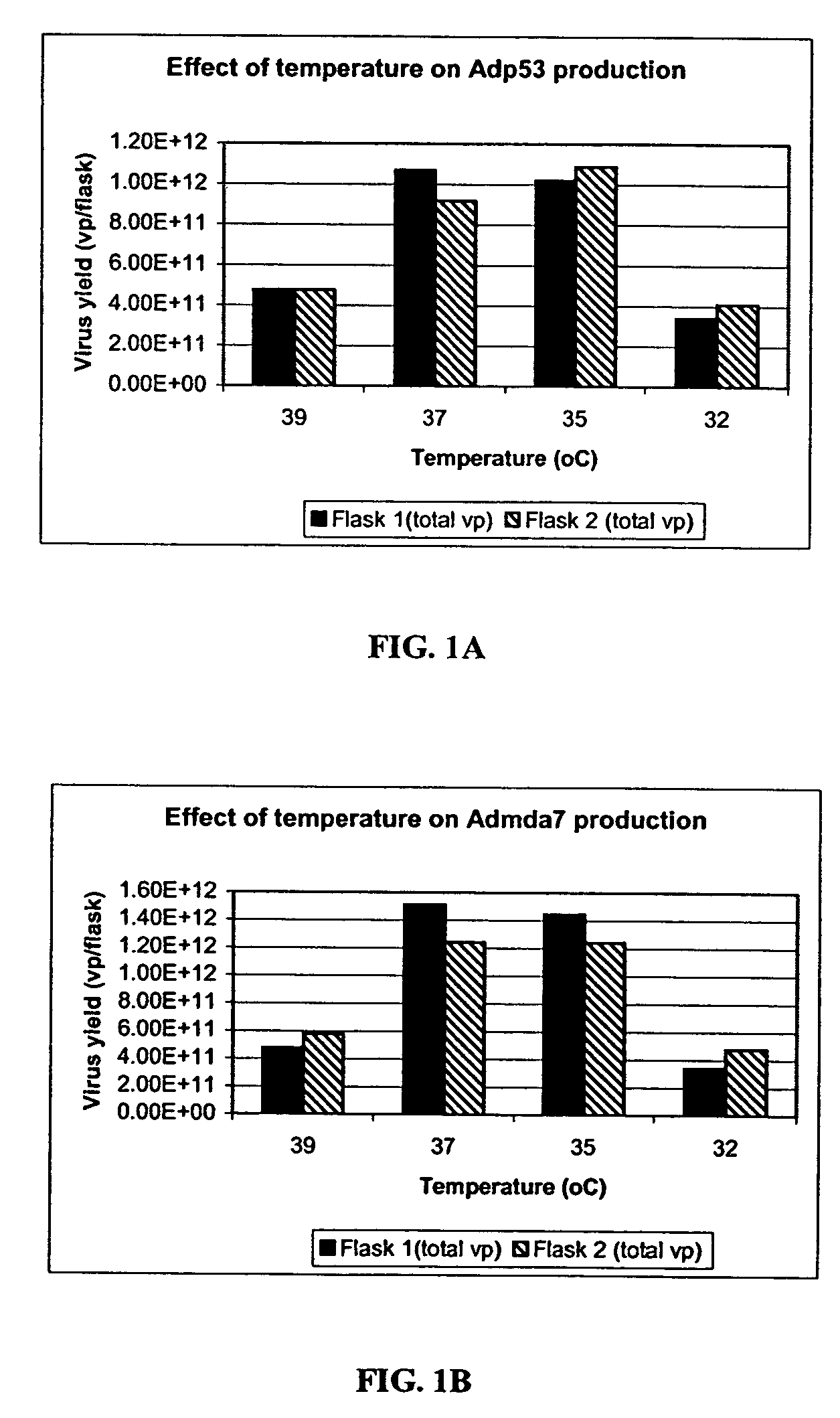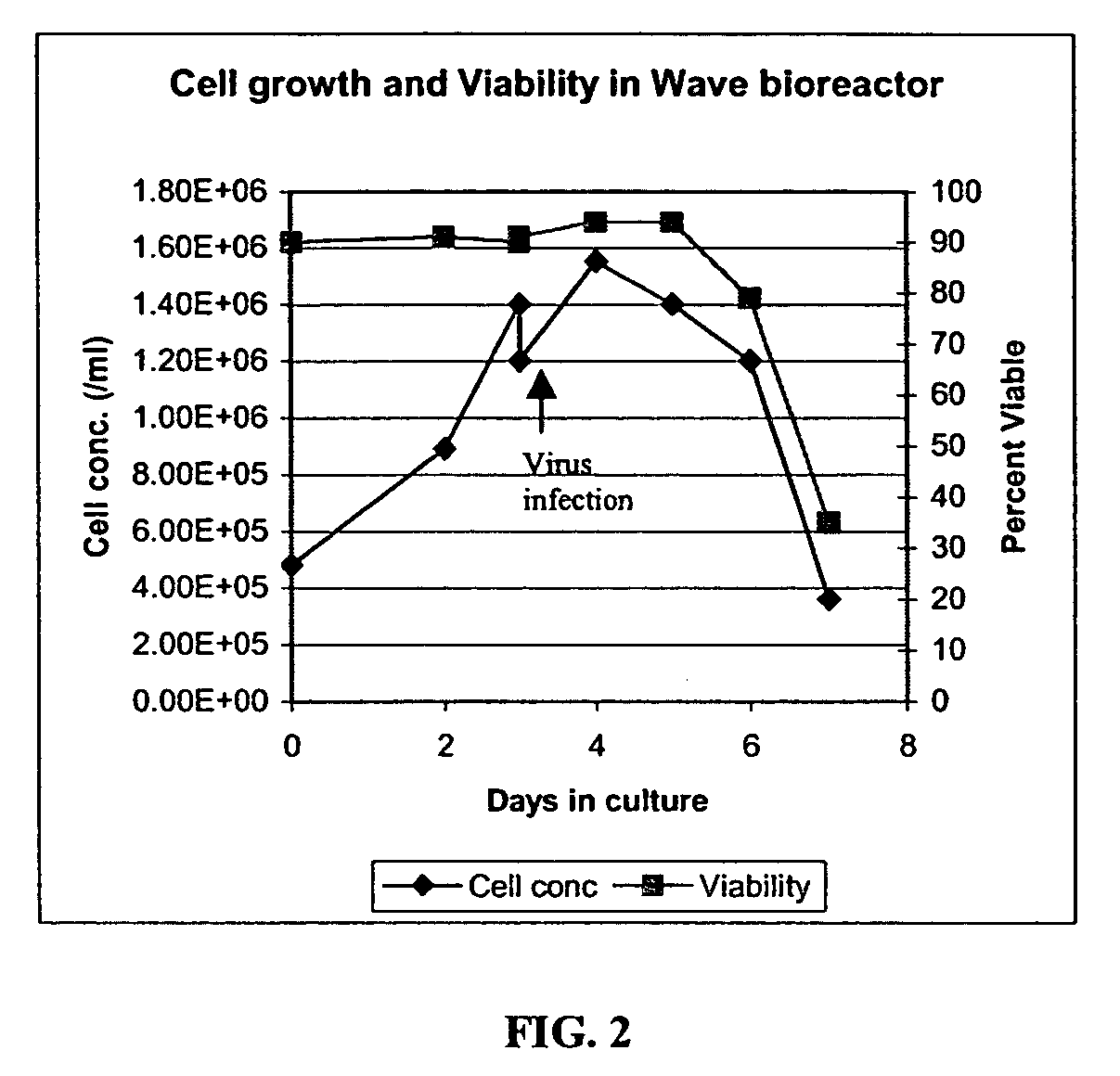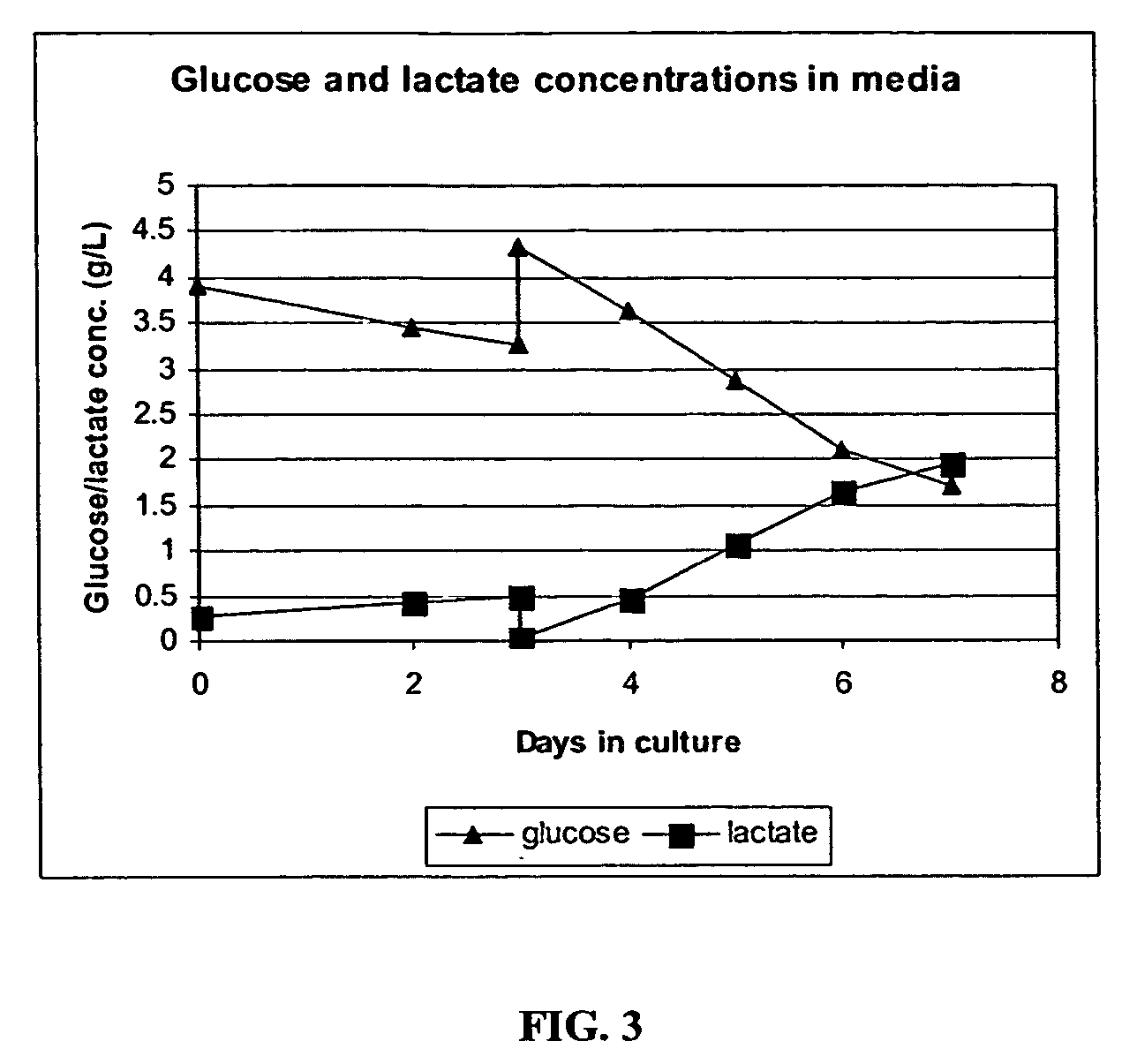Methods and compositions for the production of adenoviral vectors
a technology of adenovirus and composition, which is applied in the field of cell culture and virus production, can solve the problems of inability to meet the demand for adenovirus for gene therapy applications, inability to produce the required amount of virus using this traditional process, and limited purification throughput of cscl gradient ultracentrifugation, so as to achieve the effect of improving the technology for producing and maximizing the production of adenoviruses
- Summary
- Abstract
- Description
- Claims
- Application Information
AI Technical Summary
Benefits of technology
Problems solved by technology
Method used
Image
Examples
example 1
[0254] A study to evaluate the effect of infection temperature on adenovirus production was conducted using two adenoviral vectors, Adp53 and Admda7.
[0255] Four temperatures were evaluated: 32° C., 35° C., 37° C., and 39° C. The adenoviral vector used were Adp53 and Admda7. The cells were HEK293 cells (cell passage #54). The experiments were carried out in 293 cells grown in T-150 flasks (Corning) using an incubator (Form a Scientific, Inc., model # Steri-Cult 200). The infection medium was DMEM+2% FBS. The multiplicity of infection (MOI) was 150 vp / cell.
[0256] Nine T-150 flasks were seeded with 293 cells (cell passage# 54) at seeding density of 5.8×104 cells / cm2 in 10% FBS-DMEM medium. All flasks were placed inside a 37° C. incubator with 10% CO2, 95% relative humidity. After 72 hrs post-seeding, one flask was trypsinized and counted, and the cell density was 1.6×105 cells / cm2. Spent medium from the remaining eight flasks was aspirated and fresh 2% FBS-DMEM was added. The flasks ...
example 2
Materials and Methods
[0260]
Bioreactor model:20 / 50EH (Wave Biotech, LLC)Culture medium:CD293 protein free medium (Invitrogen ™)HEK293 suspension cells:Adapted to serum-free suspension culture at Introgen Therapeutics, Inc.Adenoviral vectors:Supplied by Introgen Therapeutics, Inc.YSI biochemistry analyzer:YSI-2700 SELECT ™
Cell Growth and Adenoviral Vector Production without Medium Perfusion
[0261] An adenoviral vector production run was carried out in a 10 L (5 L working volume) Wave Bioreactor®. HEK293 suspension cells were seeded at 4.8E5 cells / ml and were allowed to grow to 1.2E6 cells / ml in protein-free CD293 medium. The rocking speed was set at 10 and the rocking angle was set at 11. The culture pH was maintained by adjusting CO2 gas percentage delivered by the gas mixer. The dissolved oxygen tension (DOT) in the culture medium was monitored using a disposable DOT probe supplied by Wave Biotech™.
[0262] When the cell concentration reached 1.2E6 cells / ml, the culture was transfe...
example 3
Cell Growth and Adenoviral Vector Production with Perfusion During the Cell Growth Phase
[0264] A uniquely designed perfusion Wave bioreactor was set up as shown in FIG. 4. The system shown in FIG. 4 utilizes an internal flat filter to provide separation between the cells and spent medium. Spent culture medium is withdrawn through the floating filter. No medium recirculation is required, and consequently this mode of medium perfusion is very gentle to the cells in culture. The wave action minimizes filter clogging during perfusion. The culture volume during perfusion is maintained by a load cell used to trigger fresh medium addition.
[0265] A 1 L (working volume) perfusion Wave bioreactor was used to increase the cell concentration in the growth phase prior to virus infection. The cell growth and nutrient / metabolite concentrations during culture are shown in FIG. 5 and FIG. 6.
[0266] HEK293 suspension cells were seeded at a cell concentration of 5E5 cells / ml. On day 3 of culture, m...
PUM
 Login to View More
Login to View More Abstract
Description
Claims
Application Information
 Login to View More
Login to View More - R&D
- Intellectual Property
- Life Sciences
- Materials
- Tech Scout
- Unparalleled Data Quality
- Higher Quality Content
- 60% Fewer Hallucinations
Browse by: Latest US Patents, China's latest patents, Technical Efficacy Thesaurus, Application Domain, Technology Topic, Popular Technical Reports.
© 2025 PatSnap. All rights reserved.Legal|Privacy policy|Modern Slavery Act Transparency Statement|Sitemap|About US| Contact US: help@patsnap.com



